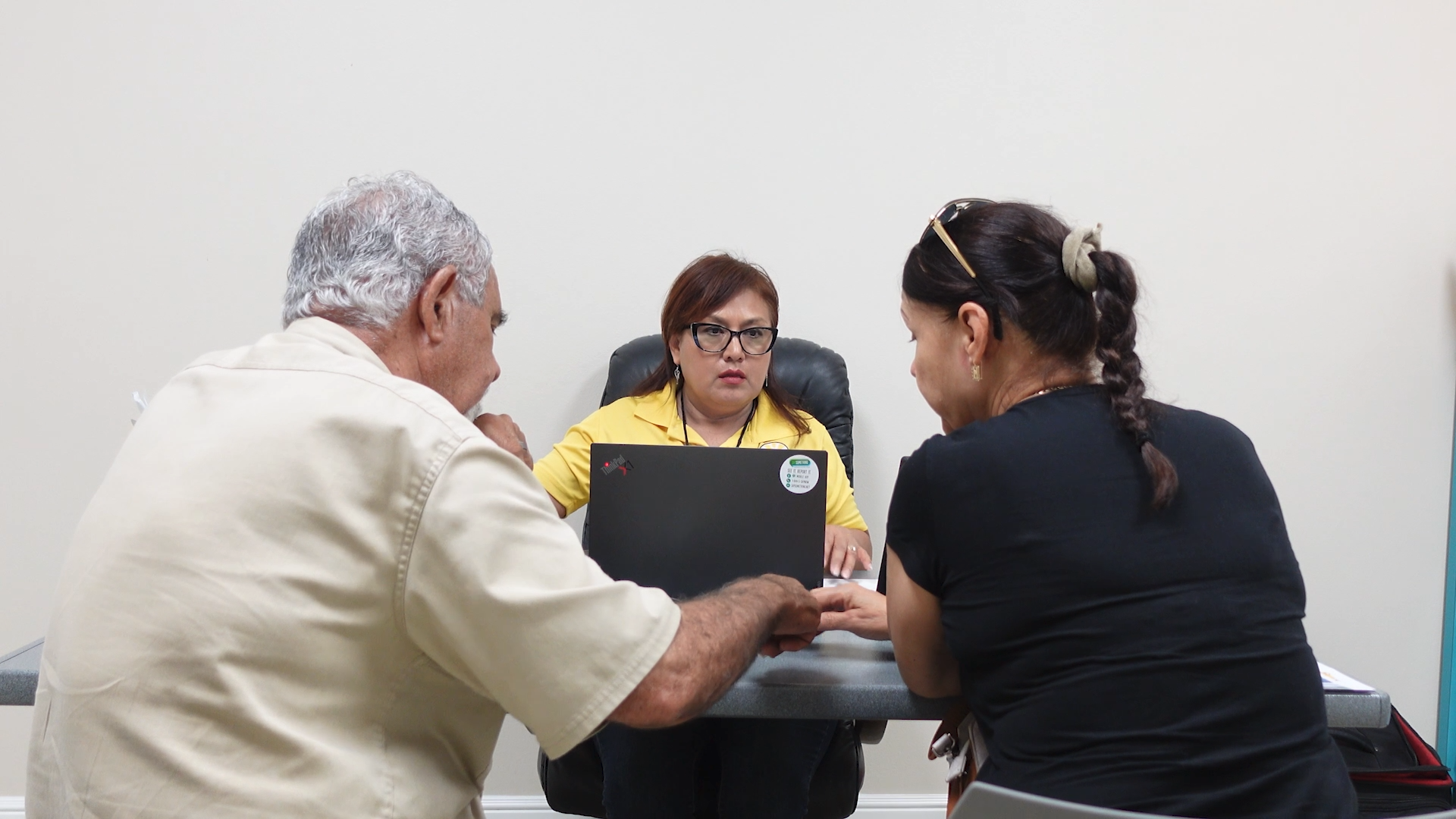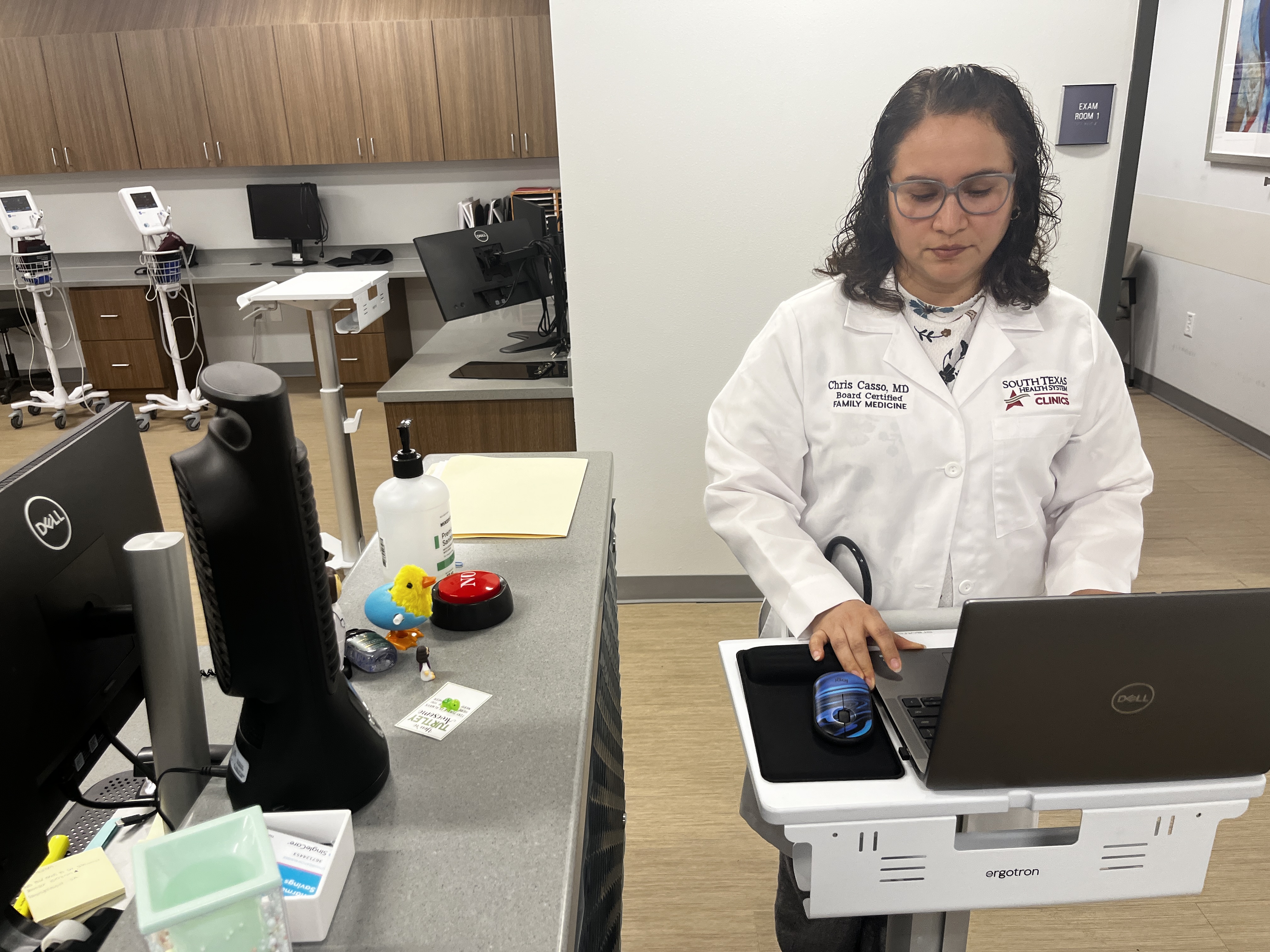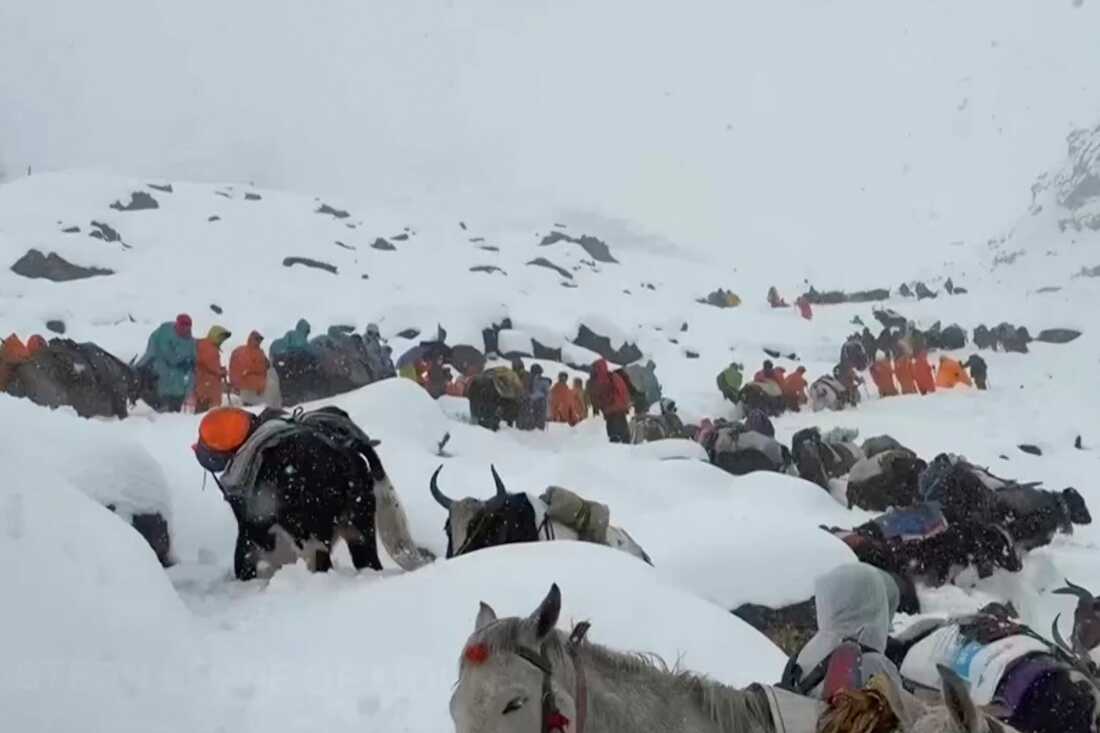RIO GRANDE CITY, Texas — Jake Margo Jr. stood within the triage room at Starr County Memorial Hospital explaining why an individual with persistent fever who may very well be handled with over-the-counter treatment didn’t should be admitted to the emergency room.
“We’re going to take care of the sickest patients first,” Margo, a household drugs doctor, stated.
It’s not like there was area on that June afternoon anyway. A small monitor on the wall pulsed with the vitals of present sufferers, who stuffed the ER. An ambulance idled outdoors within the South Texas warmth with a affected person ready for a mattress to open up.
“Everybody shows up here,” Margo stated. “When you’re overwhelmed and you’re overrun, there’s only so much you can do.”
Starr County, a largely rural, Hispanic neighborhood on the southern U.S. border, made headlines in 2024 when it voted Republican in a presidential election for the primary time in additional than a century. Immigration and the financial system drove the flip on this neighborhood, the place roughly a 3rd of the inhabitants falls under the poverty line.
Now, latest actions by the Trump administration and the GOP-controlled Congress have triggered a brand new concern: the lack of docs, hospitals, and different well being suppliers to proceed to take care of uninsured sufferers. It’s a concern not solely in Starr County, which has one of many highest uninsured charges within the nation. Communities throughout the U.S. with equally excessive proportions of uninsured folks may battle as extra residents lose well being protection.
About 14 million fewer People are anticipated to have medical health insurance in a decade on account of President Donald Trump’s new tax-and-spending legislation, which Republicans dubbed the One Massive Stunning Invoice Act, and the pending expiration of enhanced subsidies that slashed the worth of Reasonably priced Care Act plans for tens of millions of individuals. The brand new legislation additionally limits applications that ship billions of {dollars} to assist those that take care of uninsured folks keep afloat.
“You can’t disinsure this many people and not have, in many communities, just a collapse of the health care system,” stated Sara Rosenbaum, founding chair of the Division of Well being Coverage and Administration at George Washington College’s Milken Institute Faculty of Public Well being.
“The future is South Texas,” she stated.
KFF Well being Information is analyzing the affect of nationwide well being care coverage modifications on uninsured folks and their communities. Although the Trump administration informed KFF Well being Information it’s making “a historic investment in rural health care,” individuals who deal with low-income sufferers, in addition to researchers and client advocates, say latest coverage choices will make it more durable for folks to remain wholesome. Docs, hospitals, and clinics that make up the well being care security internet may lose a lot cash they need to shut their doorways, a few of them warn.
“Because the patient’s bill is not going to get paid,” stated Joseph Alpert, editor-in-chief of The American Journal of Drugs and a professor of drugs on the College of Arizona. “Uninsured patients stress the health care system.”
Starr County exhibits how this dynamic unfolds.
Main care docs within the county serve a median of just below 3,900 folks every, practically 3 times the U.S. common.
Margo, the household doctor, stated as a result of so many individuals lack insurance coverage and there are so few locations to hunt care, many residents deal with the ER as their first cease after they’re sick.
In lots of instances, they’ve uncared for their well being, making them sicker and dearer to deal with. And federal legislation requires ERs at hospitals within the Medicare program to stabilize or switch sufferers, no matter their means to pay.
That leaves Margo and his crew to apply what he described as “disaster medicine.”
“They come in with chest pain or they stop breathing. They collapse. They’ve never seen a doctor,” Margo stated. “They’re literally dying.”
Well being Programs in ‘Survival Mode’
When persons are uninsured or on Medicaid, they have an inclination to depend on a security internet of docs, hospitals, clinics, and neighborhood well being facilities, which supply providers freed from cost or soak up getting reimbursed at decrease charges than they do treating sufferers on business insurance coverage.
These suppliers’ monetary conditions can usually be precarious, main them to depend on myriad federal helps. The Trump administration’s cuts to well being care and Medicaid within the identify of eliminating “waste, fraud, and abuse” have many involved they received’t climate the extra monetary pressure.
Trump’s new legislation funds his priorities, like extending tax cuts that primarily profit wealthier People and increasing immigration enforcement. These prices are coated partially by a virtually $1 trillion discount in federal well being spending for Medicaid inside the subsequent decade and modifications to the ACA, akin to requiring extra paperwork and shortening the time for folks to enroll.
Many Republicans have argued Medicaid has gotten too massive and strayed from the state-federal program’s core mission of protecting these with low incomes and disabilities. And the GOP has fought to roll again the ACA since its passage.
Kush Desai, a spokesperson for the White Home, stated projections from the nonpartisan Congressional Price range Workplace about how many individuals may lose medical health insurance are an “overestimate.” He didn’t present an estimate the administration sees as extra correct.
Supporters of the “One Big Beautiful Bill” say those that want well being protection can nonetheless get it in the event that they meet new necessities akin to working in trade for Medicaid protection.
And Michael Cannon, director of well being coverage research on the Cato Institute, a libertarian suppose tank, stated even with the laws, Medicaid spending will develop, simply not as rapidly.
The funds legislation received’t trigger “the sky to fall,” Cannon stated. “The inefficient providers should be shutting down.”
A latest survey from AMGA, previously the American Medical Group Affiliation, which represents well being methods throughout the nation, discovered practically half of rural amenities may shut or restructure on account of Medicaid cuts. Almost three-quarters of respondents stated they anticipated layoffs or furloughs, together with of front-line clinicians.
Public well being departments, which frequently fill gaps in care, additionally face federal funding cuts which have diminished their capability. In South Texas’ Cameron County, the well being division has eradicated practically a dozen positions, stated company head Esmer Guajardo. In neighboring Hidalgo County, the well being division has laid off greater than 30 folks, stated Ivan Melendez, who helps oversee its operations.
In July, the Texas Division of State Well being Companies canceled Operation Border Well being, a large annual occasion that final 12 months offered free well being providers to just about 6,000 South Texas residents.
Gateway Neighborhood Well being Heart in Laredo, a border metropolis north of the Rio Grande Valley, is in “survival mode,” with a few third of sufferers already missing insurance coverage and much more who will battle to afford well being care if the ACA subsides aren’t renewed, stated David Vasquez, its director of communications and public affairs. The middle is searching for different types of funding to keep away from layoffs or cuts to providers, and its enlargement and hiring plans are on maintain, Vasquez stated.
That downsizing is going on as extra folks lose medical health insurance and want free or reduced-cost care.
Esther Rodriguez, 39, of McAllen has been out of labor for 2 years and her husband makes $600 per week working in building. Neither of them has medical health insurance.
Medicaid coated the payments for the births of her 5 youngsters. Now, she will depend on a cellular well being clinic run by a neighborhood medical college, the place she will pay out-of-pocket for routine checkups and medicines to regulate her Sort 2 diabetes. If she wanted extra care, Rodriguez stated, she would go to the ER.
“You have to adapt,” she stated in Spanish.
‘Death by a Thousand Cuts’
Individuals’s incapability to pay ends in uncompensated care, or providers that hospitals, docs, and clinics don’t receives a commission for, which, beneath an earlier model of the megabill, was projected to extend by $204 billion over the following decade, in keeping with the City Institute, a nonprofit suppose tank.
However the Trump administration can also be reducing different assist that helped offset the price of take care of individuals who can’t pay. The brand new legislation caps federal applications that many well being suppliers for low-income folks have come to depend upon, particularly in rural areas, to shore up their budgets. These embody taxes on hospitals, well being plans, and different suppliers that states use to assist fund their Medicaid applications. Such supplier taxes are a “financial gimmick,” Desai stated.
Whereas the legislation creates a brief $50 billion fund to assist rural docs and hospitals, that’s slightly over a 3rd of estimated Medicaid funding losses in rural areas, in keeping with KFF, a well being data nonprofit that features KFF Well being Information. Desai known as the evaluation “flawed.”
Any loss in income may spell monetary spoil, particularly for small rural hospitals, stated Quang Ngo, president of the Texas Group of Rural & Neighborhood Hospitals Basis.
“It’s kind of like death by a thousand cuts,” he stated. “Some will probably not make it.”
And the hits may preserve coming. The Trump administration’s funds request for the approaching fiscal 12 months requires cuts to a number of rural well being applications operated by the Well being Assets and Companies Administration. Desai stated the spending legislation’s funding in rural well being “dwarfs” the cuts.
In February, the Trump administration introduced funding cuts of 90% to the ACA navigator program, which helps folks discover medical health insurance. That program has been “historically inefficient,” Desai stated.
In December 2023, practically 3 million of Texas’ uninsured have been eligible for ACA subsidies, Medicaid, or the Youngsters’s Well being Insurance coverage Program, in keeping with Texas 2036, a public coverage suppose tank.

Maria Salgado spends her workdays tabling at neighborhood occasions, dropping off flyers at docs’ workplaces, and holding one-on-one conferences with shoppers of MHP Salud, a nonprofit that connects residents to Medicaid and ACA protection.
She apprehensive funding cuts would actually set the group’s efforts again: “A lot of community members here, they’re going to be left behind,” stated Salgado, a neighborhood well being employee, or promotora.
Chris Casso, a main care doctor who grew up in McAllen and now practices there, held again tears as she described treating sufferers who’ve postpone seeing a health care provider due to an incapability to pay, solely to have their preventable situations deteriorate.
She worries about the way forward for her neighborhood as doctor shortages worsen, doubtlessly leaving few suppliers to deal with uninsured folks.
“It’s heartbreaking,” she stated, sitting in a small again room in her workplace in a suburban strip mall, wedged between a Kohl’s and a Shoe Carnival. “These are hardworking people,” she stated. “They try their best to take care of themselves.”
Casso stated her personal sister, who labored as a medical biller in a doctor’s workplace, couldn’t afford medical health insurance. She delayed care and died at age 45 of issues from diabetes and coronary heart illness. Casso worries the long run will discover extra folks in related conditions.
“Our population is going to suffer,” she stated. “It’s going to be devastating.”





